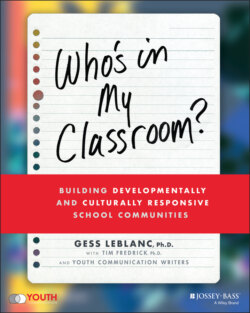Читать книгу Who's In My Classroom? - Tim Fredrick - Страница 12
The Adolescent Brain Is Still Developing
ОглавлениеIn addition to being a physical and psychological process, development is also neurological. When educators like Millie help students like Amber change their thinking and their behavior, it can have a positive impact on their brain development.
Each domain of development is influenced by our brain, so the study of developmental psychology has benefited from improvements in neuroscience over the last few decades. Functional and structural MRIs have enabled researchers to better understand how the brain works, how it's shaped by certain experiences, and how it adapts under certain conditions.
One well-accepted concept related to the study of the brain is the idea of plasticity. Similar to the way in which plastic's flexibility allows it to be shaped in response to pressure, the brain is also flexible in terms of how it responds to life conditions and our experiences. For teachers, the concept of plasticity is critical because it helps us to understand that our students’ prior histories are not their destinies. While negative experiences can shape the brain in harmful ways, positive experiences can shape the brain in beneficial ways.
Research also reveals that neural connections that are used regularly become stronger and more complex. Conversely, the brain treats seldom used connections as nonessential and eventually prunes them away to enhance functioning. Much like pruning a tree to strengthen its remaining branches, this process—referred to as synaptic pruning—strengthens neural connections and makes cognitive processing more efficient.
We also know that the development of these synapses is influenced by our experiences. For example, learning things through different modalities or making connections between what we learn in one context and what we learn in another promotes synapse formation.8 This helps to explain why when our teachers connected something that we learned in our math class with something that we learned in our social studies class it helped us to learn it better. It also helps to explain why when teachers connect what students are learning in school to their lives outside of school it's so impactful for students. Those explicit connections between what they're learning in school and their lives outside of school strengthen neural connections that deepen their conceptual understanding.9
Amber learned to think differently and act differently, which made her a better student and happier person. But it's also likely that the changes in her thinking and behavior affected her brain development in positive ways, which further reinforced her ability to succeed. Conversely, had Amber not gotten support, both her behavior and her brain development might have suffered. The activities she began to participate in didn't just “distract” her; they helped to build new neural pathways.
